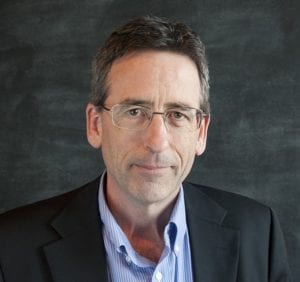Regulators Must Mirror the Greening of America’s Power Supply
COMMENTARY
The 19th-century electrical grid has had a good run in the United States.
For more than 100 years, it has reliably provided electricity to end-users based on the premise that a centralized generation and transmission model was the way to go. Large coal, hydro and (later) nuclear generating facilities would produce huge amounts of electricity and, through a spider’s web of high voltage transmission lines, send the power to distribution substations which in turn, through a secondary set of lower voltage feeders, would distribute the power out to the end users.
And when the end-user flipped the switch, their lights or whatever electrical appliance was at the end of the wires would go on. This system was extraordinarily reliable. There was a downside in that it also created a lot of pollution – acid rain, smoke, heavy metals in the ocean and in our food chain if you eat sushi, and “greenhouse” gases in the atmosphere, and everlasting, dangerous nuclear waste – and it continues to do so all over the world.

As we move into the 21st century, however, centralized electrical generation is being replaced by renewable and distributed energy resources (DERs) like wind and solar, many of which are being deployed at the edge of the grid. These DERs are fast approaching cost-parity with traditional resources, removing the need for subsidies and accelerating their deployment, while at the same time accelerating the retirement of older and now non-competitive and more polluting resources.
With the economics lining up, the move to use DERs is irresistible and unstoppable. It is hard to know why anyone would not want to use the wind and the sun as our primary generation resources. After all, the “fuel” is free and in-exhaustible (the “renewable” part), and generally non-polluting, with no carbon emissions or dangerous nuclear waste. And of course, people do want this – Hawaii, California, Washington, D.C., and now New Mexico have all enacted legislation to eliminate carbon emissions from the grid and move to 100% renewable electrical generation – and a dozen other states have similar goals.
However, while the states continue to create some interesting and innovative policies to get us to a smart grid, none of them have fully tackled the pressing need to revamp the entire way utilities do business in the United States. Until that problem is solved, there will likely be continuing resistance at the utility level to allowing more renewables on to the grid, for the entirely rational reason that the regulated financial models they work under are not designed to work in this new world of intermittent, grid-edge and consumer-based generation.
The regulatory problems, politics and an overall dislike of disruption and change can and will slow the inevitable drive to 100% clean and renewable electric power. But I am certain that in the end, the economics will win as it always does – you just can’t compete with “fuel” that is free, inexhaustible and non-polluting, not to mention zero-carbon, especially if it is what the consumer ultimately wants.
The good news is that there is growing recognition that these issues need to be addressed. Right now, all across the country, from Hawaii to Maine, there are working groups within many of the state PUCs that are attempting to stay out ahead of the DER wave and not get swamped by it. But they need to move more quickly.
—Pete Maltbaek is General Manager North America for Smarter Grid Solutions (SGS), and a member of the SGS executive management team. He has more than 30 years’ experience working in the electric industry in North America and with utilities and regulators in more than 30 countries around the world. His primary expertise is in the design and technology requirements of electric utility grid control systems, deregulated power markets, and the integration of renewable energy into grid operations.